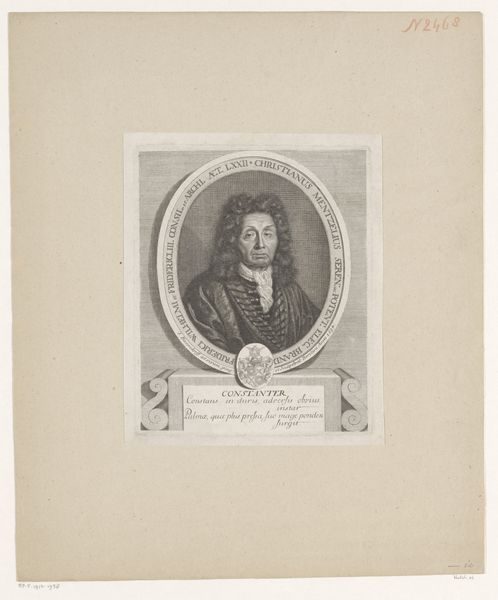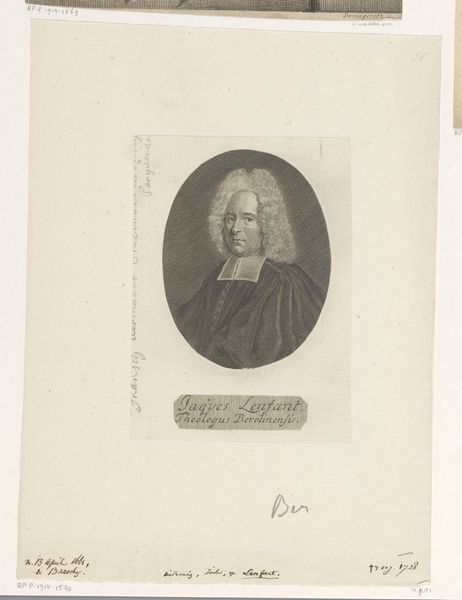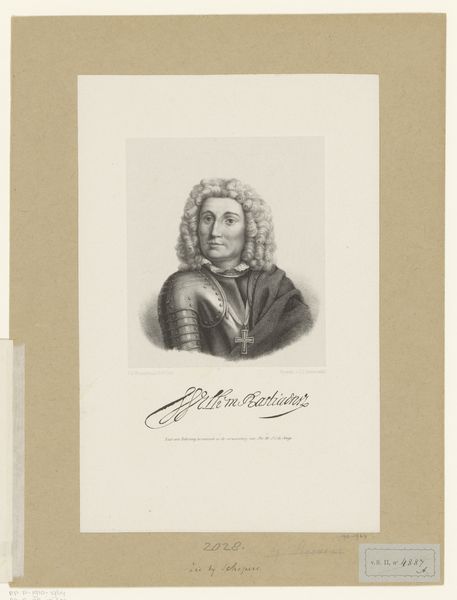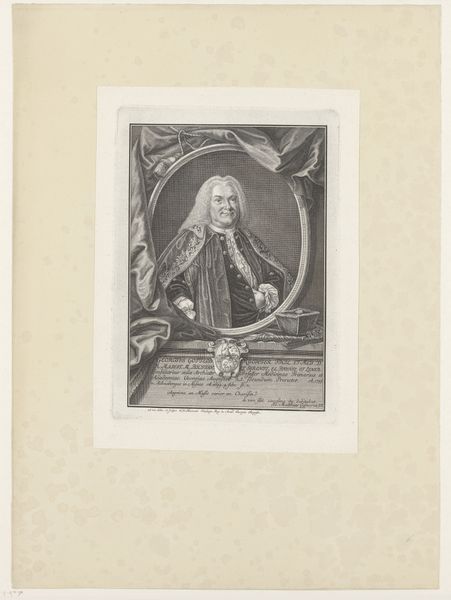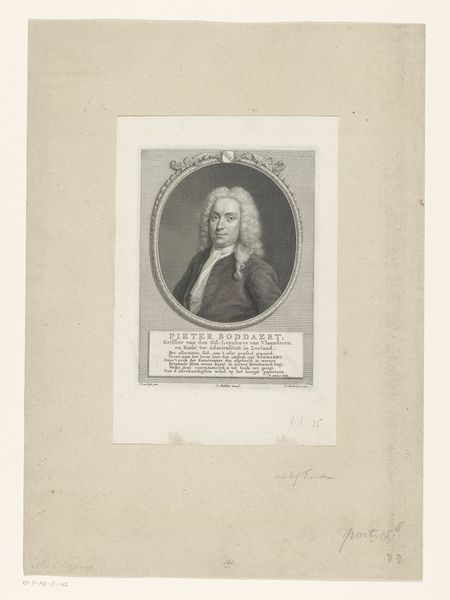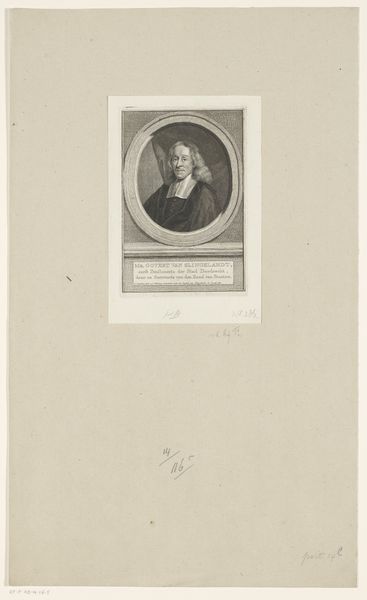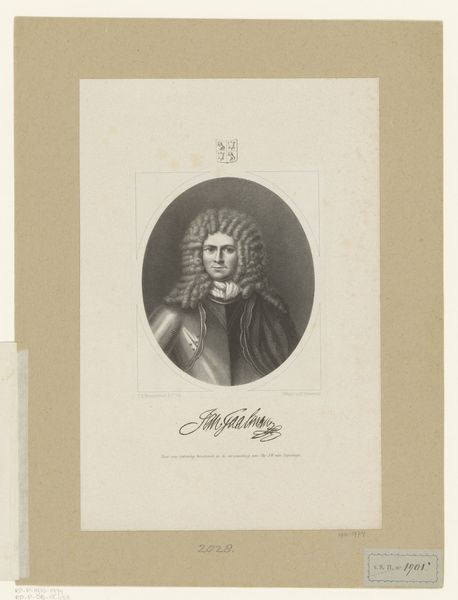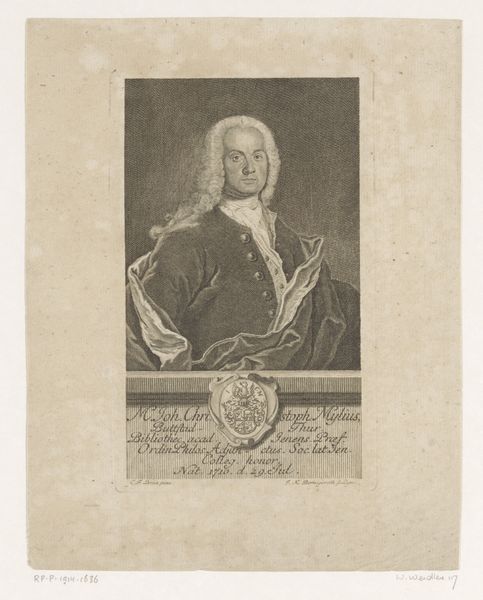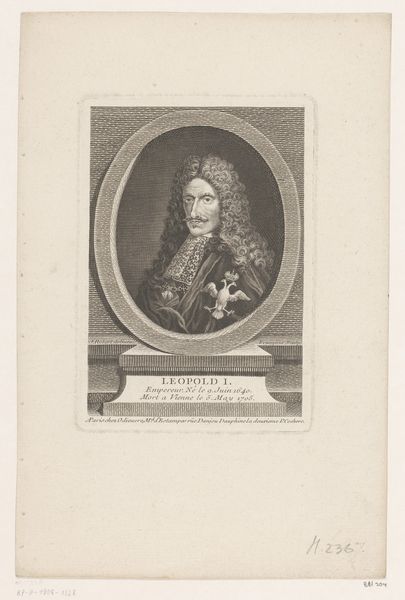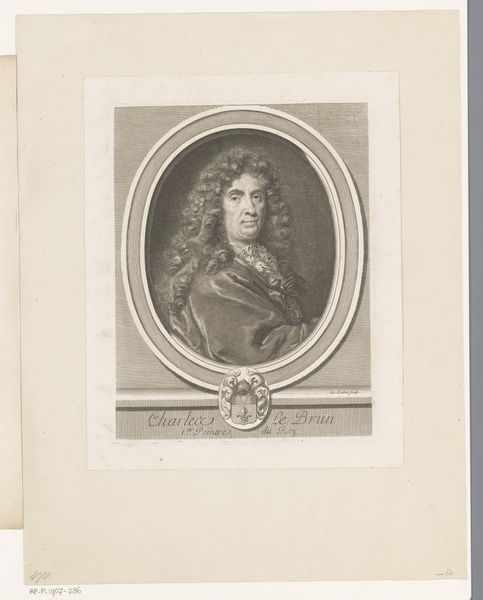
Dimensions: height 268 mm, width 179 mm, height 337 mm, width 252 mm
Copyright: Rijks Museum: Open Domain
Editor: This is Frederik Hendrik Weissenbruch's "Portret van Isaac Sweers," created between 1858 and 1862. It's an engraving, and the level of detail is remarkable. I’m struck by how…stately he looks. The sitter's got this confident yet knowing expression. What strikes you most about it? Curator: The portrait is compelling because it acts as a conduit to understanding cultural values and remembering historical significance. The Baroque style tells us something right away about aspirations of power. Consider the carefully rendered details like the voluminous hair, which symbolize virility, prosperity and strength. Editor: So the hair is symbolic? Curator: Yes! And the lavish lace collar speaks of social status, of course. Even the circular frame adds to this, acting almost as a looking glass. And, engravings, were, at that time, one of the only methods to record and pass down knowledge to generations about leaders such as these, almost bestowing immortality. What do you think all these contribute to our understanding of Isaac Sweers himself? Editor: Well, he certainly wants to be remembered a certain way! This isn't a casual snapshot. Knowing that engravings immortalized figures makes the piece even more potent. Curator: Precisely. Engravings solidify a cultural memory. So, it's about understanding the conscious choices that were made to present an image, a legacy, in a specific manner for future generations to witness. Editor: It's fascinating how much a single portrait, and even elements like the hair or the collar, can reveal about a society's values. Curator: Absolutely, and considering such symbols woven into art leads to broader insights into what past generations wanted to retain and share.
Comments
No comments
Be the first to comment and join the conversation on the ultimate creative platform.

